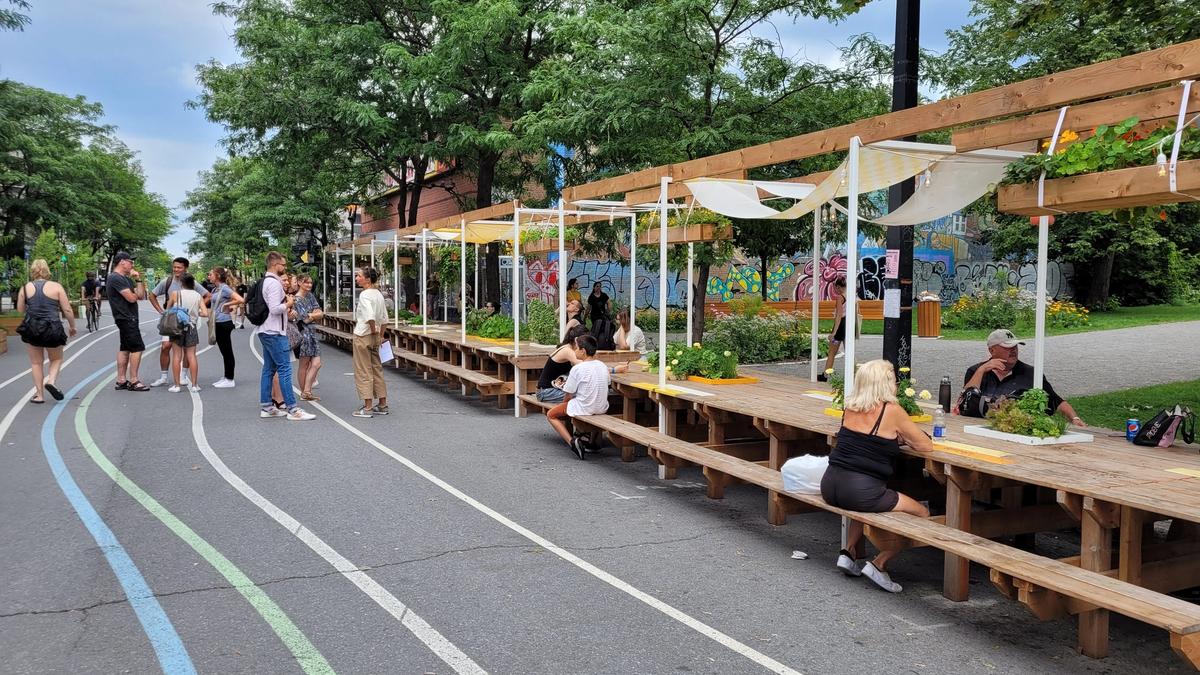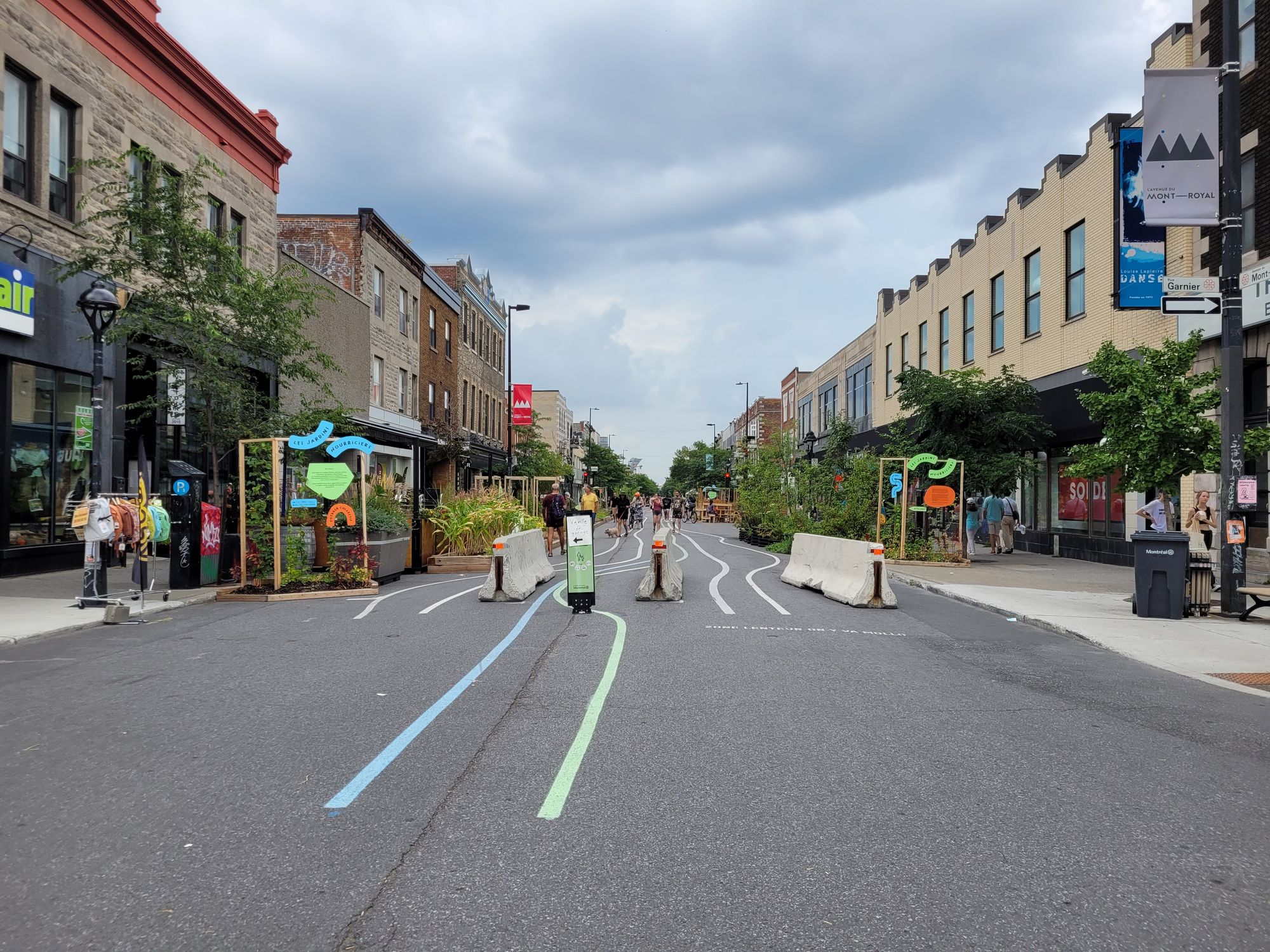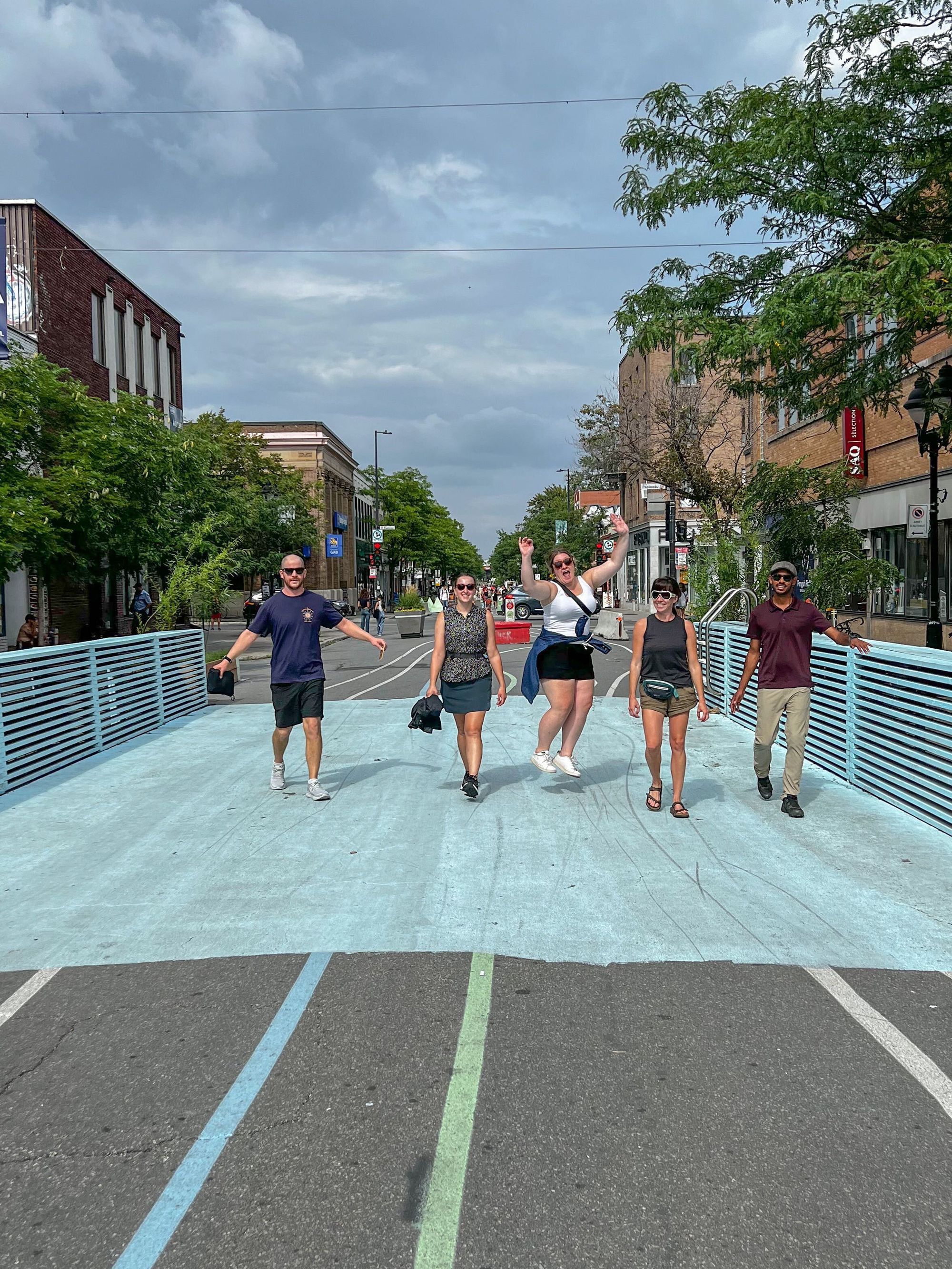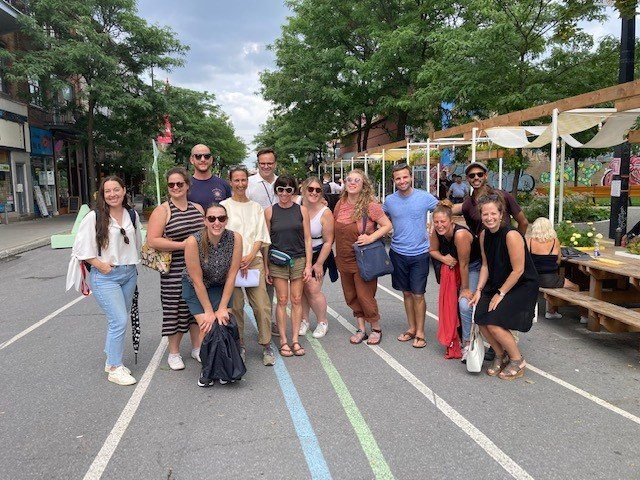
Tour l’Avenue du Mont-Royal
We toured the Mont-Royal Avenue in the Plateau borough of Montréal that was transformed into a 1.5 mile open street in the summer of 2022.
In August, the Patronicity team traveled to Montréal for our annual retreat. A new destination each year gives us the opportunity to be inspired by how other cities are using placemaking and community development to create welcoming, inclusive, vibrant spaces. Our fully remote team revels in the experience; this year was no different!
However, Montréal was different! Leaving the states, we looked forward to connecting with individuals in Montréal who are doing things a bit differently than we’re used to in our various hometowns.
With abundant open streets and miles of protected bike lanes, our team was excited to meet with staff from the City of Montréal and other organizations developing city infrastructure that is safe, convenient, and fun to use on foot or bike!

We were thrilled to connect with Claude Rainville from Société de Développement de l’Avenue du Mont-Royal. Claude generously provided our team with a tour of l’Avenue du Mont-Royal.
Mont-Royal Avenue in the Plateau borough of Montréal was transformed into a “linear park” for the summer. Commonly referred to as an open street, the 2.5 km/1.5-mile park temporarily closed the street to cars and opened it for people. The open street took place from June 20th through September 5th, 2022. Visiting in late August, we were lucky enough to catch the street before its fall closing in preparation for the harsh Canadian winter.

On the street, a ground mural ebbs and flows, guiding pedestrians and cyclists along the active streetscape through installations, artwork, picnic tables, and garden beds. Along the way, residents and visitors alike enjoy the open street’s five adjacent city parks.
The installations and artwork were designed by Jean Beaudoin and the Mont-Royal Avenue team. Three themes were considered in the design: relaxation, vegetation, and staying cool. These themes take shape with unique, practical, and sometimes playful installations, like the breeze pool. The breeze pool transformed part of the street into a bright blue “swimming pool” with aqua paint on the ground and two lines of fans to cool those passing by.
The pool was a memorable moment for our team and became an instant photo op–checking boxes for both relaxation and staying cool!

Relaxation
Over 1,000 seats were added to the already 1,700 seats available on terraces.
Vegetation
800 linear feet of food-producing gardens and forest benches were installed. Programs open to the public activated the garden spaces throughout the summer with 20 or so urban gardening workshops.
Staying Cool
Installations along the Avenue invited those passing by to take a break in refreshing locations such as the stream, the breeze pool, the mist oasis, and the water spouts at Place Fleurs-de-Macadam. In some areas, pale colors were painted on the asphalt to reflect the sun's rays.

During the open street season, it became the largest public space in Plateau-Mont-Royal. For us and millions of visitors, it was a stunning attraction and an excellent way to explore Montréal.
The Avenue reclaimed a space primarily designed for cars and transformed it into a place for community, camaraderie, and relaxation by opening the street to people.
In addition to reclaiming a street, the open street’s design emphasized sustainable development, repurposing, and recycling materials used throughout the installation. Many members of our team were concerned about what would happen to the installations and vegetation after the street closed.
“These days, we need to take into account the lifecycle of the materials and of the space itself,” said Jean Beaudoin in a press release issued by Société de Développement de l’Avenue du Mont-Royal. “In a temporary, transitional installation, the cycle is shorter, only about three years on average. Every action we are planning to take was thought out prior to the work. Every piece of material used last year will be reused, transformed, repurposed, diverted, and recycled. The same goes for the plants. They will be replanted in the fall in green alleyways throughout the neighbourhood. The cycle will continue in the summer of 2023.”
Mont-Royal Avenue was one of ten streets that opened to the public this summer. The Avenue felt cozy, energetic, safe, and welcoming all at the same time. It is no surprise that cities across the world are transforming streets in similar ways, even in winter months.

